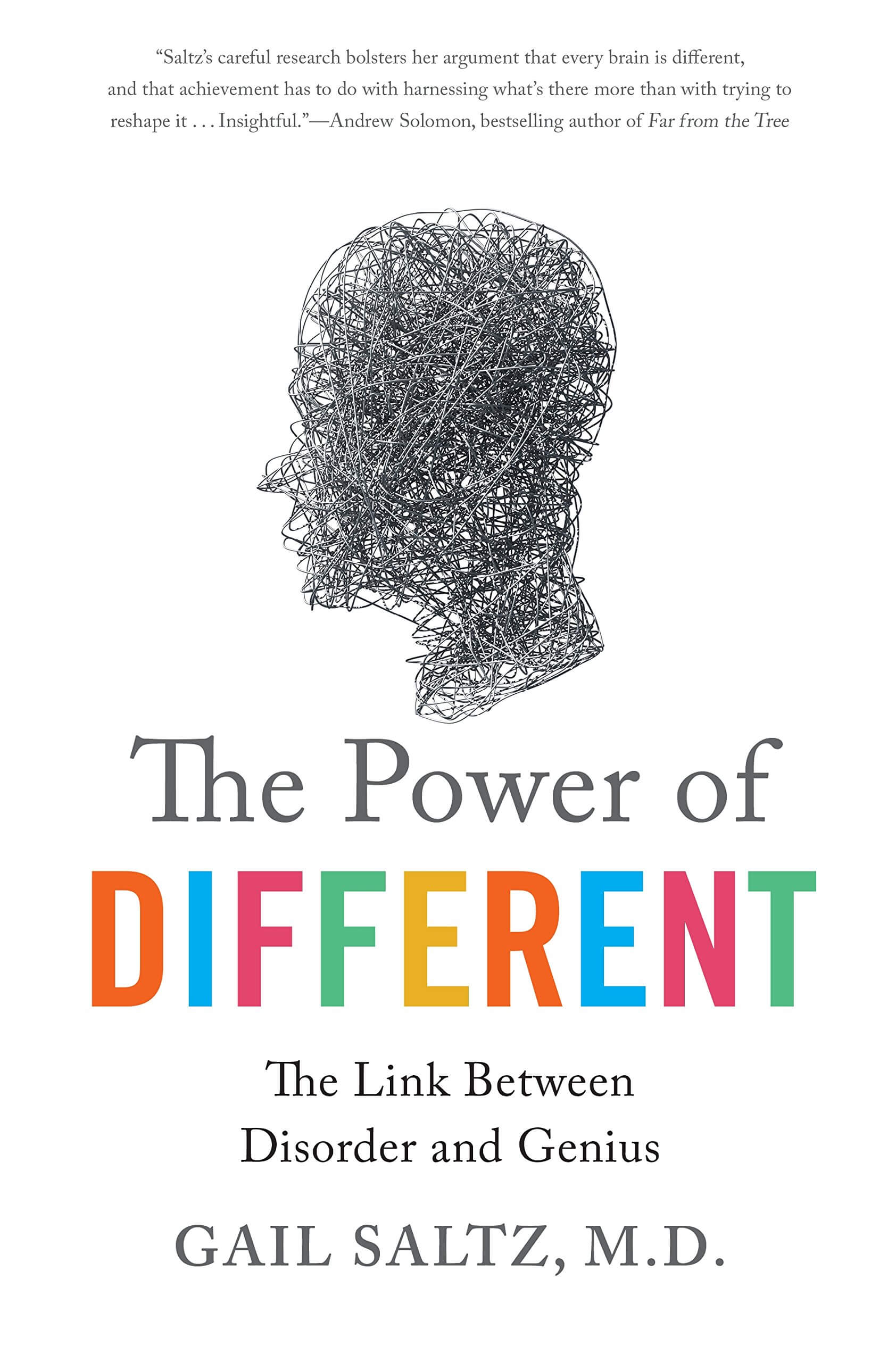The Power of Different: The Link Between Disorder and Genius
Dr Gail Saltz is a psychiatrist and psychoanalyst as well as a television commentator and columnist, who has written self-help books, one of which is ‘The Power of Different: The Link Between Disorder and Genius’. Saltz quotes a peer Kaufman, by saying that ‘everyone is on the spectrum with regard to most things, i.e. Schizophrenia, Autism and Mood Disorders. And we fluctuate along this spectrum across the lifespan, as well as every day’.
The book, ‘The Power of Different: The Link Between Disorder and Genius’ is aimed at American audiences, stating that one in two Americans will experience a Mental Health problem at some point in their lives. In Australia, if you take a family of five, one of those will have a disability. The thing with Mental Illnesses, is that they are often invisible, and it has only been in recent decades that progress away from stigmatization and having people living in the community instead of hidden away, that an acceptance of people with disabilities is slowly occurring. Saltz argues that disabilities and their symptoms are prolific within modern day society, and haven’t gone away despite evolution, because they are necessary for us as a group, in society. Her argument is that there are amazing achievements from people who have brain differences, and instead of despite them, it is because of them that they achieved what they did. An excellent example of this is that Charles Darwin, the theorist of Evolution, had obsessive-compulsive disorder. Had he not been inclined towards being obsessive and compulsive, he may not have achieved what he did. Saltz doesn’t advocate against pharmaceuticals, but rather finding the sweet spot, of medication and counselling to appeal to the worst of the symptoms of mental illness, but also so that the brain differences of learning differences, anxiety, distractibility, eccentric thinking, cycling mood, melancholy and not being able to relate, and describes as traits along a continuum, rather than disorders, and explores where the ‘sparks of brilliance’ occur. As well as this, traits often overlap, as do diagnoses. Saltz puts this as stories of inspiring, real people, with ‘remarkable, atypical brains’. And how our education system, often, fails them. An example of this, is unstructured free time for children to play, and day dream. Daydreaming and creativity have come to the fore in discussion recently, as people worry about how structured a day is that affects modern day children. How are they supposed to know their limits, if they cannot play outside? If they are constantly coddled, and not able to explore. Where would we have been without Einstein if he were not allowed free time to be himself and daydream?
Later in the book, Saltz discusses the toll of mental illness: ‘The World Health Organisation estimates over eight hundred thousand suicides each year globally, nearly all of which are a consequence of a mental disorder’. That despite their brilliance and creativity, their brains are a bit ‘messy’. Often what affects people with disabilities is the stigma and labels involved with them having a disability, and thus they are pathologized. Saltz argues they are seen through a lens of deficits and weaknesses, and her book explores their strengths and genius. She argues that these differences have survived and not been left behind in evolution as they are pertinent to our evolution. The problem however is the story of the tortured artist, because of their difference they are shunned and hidden away, despite their immense contribution to society. We really are a weird and wonderful bunch. And these little sparks of difference are what makes us, as individuals as well as a group, special.
Sarah



